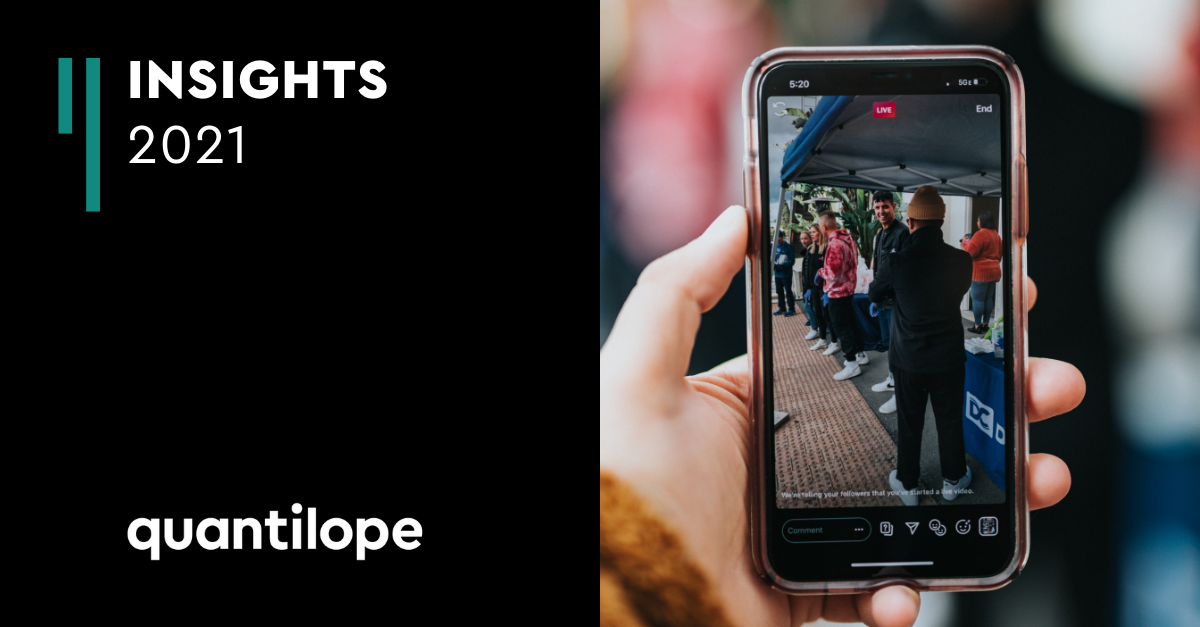Live streaming video - a brave new world for market researchers?

The willingness of so many to share the intimate details of their lives, coupled with the rapid development of technology allowing them to do so, presents numerous unprecedented opportunities for researchers...
Reality TV – where it all started
People are interested in the lives of others – we started to learn how deep this fascination runs when The Osbournes became the first major stars to feature in their own reality TV show, following on from the success of concepts like Big Brother and I'm a Celebrity... Then came Keeping Up With The Kardashians, that most orchestrated of shows that called into question whether 'reality' was even the right word – still, the audience was hooked.
They may only be movies, but back in the late 90s, The Truman Show and EDtv picked up on the growing reality TV trend and showed us a glimpse of an exciting but scary future – one where producers take things a step too far and broadcast the lives of ordinary people 24/7.
Well folks, that future – or a version of it – might well be fast approaching...
The advent of live streaming technology
With the emergence of social media like Facebook and YouTube, faster broadband connections and improving webcam technology, it was only ever a matter of time before members of the public found an audience to share their lives with and became the stars of their own vlogs and online shows. The concept of a person live streaming their life is not an entirely new one – notable examples over the past 10 years include Cyberman, who still broadcasts live and uninterrupted from his bedroom in Finland, and Justin.tv (now twitch.tv, a live-streaming site for gamers), where people could stream live from their webcams, and which for a time was used by its creator Justin Kan to broadcast his own life non-stop.
Although these examples never quite took off, always-on streaming may yet become a thing – if an established celeb or internet personality starts streaming their life 24/7 for example, it could well capture the public's fascination for voyeurism, and the headlines with it – and if it does, more will likely follow.
Whether this happens or not though, there's an ever-increasing number of tools offering people the opportunity to broadcast large segments of their lives, even if not every single moment. Snapchat has just released its Spectacles, which allow users to automatically create and publish videos at any time, with other popular platforms where people can stream their activities including Facebook Live and Periscope.
We must be careful with these new technologies too, as there are many potential downsides brought about by the impossibility of monitoring and censoring such a high volume of live transmissions, among them the broadcasting of crimes, the risk of children stumbling across live porn, the spreading of harmful ideologies and copyright infringement – people have even live-streamed their suicides, including the tragic case of Katelyn Nicole Davis just recently.
The value of live streaming in video research
As researchers, this rising phenomenon can give us the opportunity to study the behaviour of two sets of people – those who are making their everyday existence public, and those who consume what they publish. So what can we really learn?
With so many opportunities for people to stream live, and even more for others to watch what they're putting out there, we can expect to see a plethora of different subjects, hobbies and habits come up to the surface, as well as novel and creative uses of the technology...live-streamed yoga class, anyone?
And aside from data about the viewers – like who they are, what they're choosing to watch and why – plenty of trends are likely to emerge, some of which may even surprise us or give us new insights into people's online behaviour. Perhaps new ways of socialising online will develop through the use of the technology, and we'll quite possibly get new angles on public events and unprecedented access to breaking stories that the major news outlets can't (or won't) offer us.
The real value for researchers, though, will come in the form of opportunities to take a first-hand peek into important aspects of people's lives, such as what they do in their spare time, which topics they're talking about and how they really feel about them. We'll also get insight into how they present themselves publicly – and while it might never quite be possible to know how these people behave when they're not being watched, observing their online persona can still tell us a lot...
What technology can do for us
With speech recognition technology getting better all the time, the modern era of online video offers us the chance to analyse large data sets, and when you add facial emotion recognition into the mix, there's a wealth of new information to be had about which kinds of news stories, topics and events get the strongest emotional response from the public and importantly, how the strength and quality of people's actual emotions compare to their verbal expression of them.
These nuances and unspoken truths of people's feelings hold a lot of value for researchers – and this is something that we can now analyse on a much larger scale than ever before thanks to bigger sample sizes and the availability of technology for analysing emotions. As well as facial emotion recognition, tools like inColor allow us to automatically identify emotion-related keywords from a video of a person speaking, and then use these to rate and categorise the sentiment being expressed.
With so many possibilities emerging, it's all rather exciting – and with live streaming technology becoming increasingly accessible, we're about to get hold of a shedload of new data that will help us understand people's lifestyles, emotions, and how they share them online.
Get in touch with an expert
